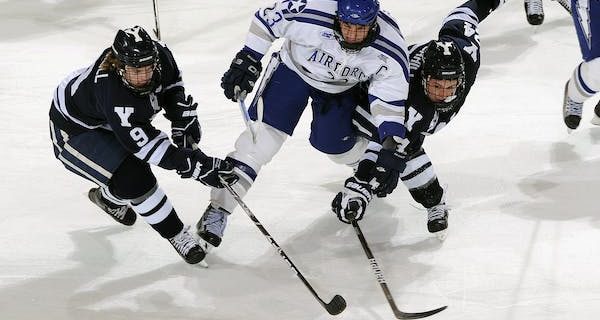
By
Tim Skuce, Teresa Anne Fowler, and Shannon D. M. Moore
January 2023
Print Version
What you need to know
This project, “An inquiry into how elite-level ice hockey players enact forms of resistance to hegemonic masculine ideals” explored and examined how elite-level men’s ice hockey players understood and enacted forms of resistance against hypermasculine ideals within this sporting context.
Why this research is important
Hockey is deeply embedded in Canadian culture; it has evolved from a recreational activity–a game–to a way of life. Recent highly publicized stories of sexual assault involving Hockey Canada expose that hockey culture needs a reckoning. Not only have people outside of the game sounded the alarm, but players also continue to reveal issues of hazing, racism, sexism, silencing, and consequences to their mental and physical health (Aliu, 2020; Hirsch, 2017; Wilson, 2021; Wyshynski, 2020). These “revelations” expose the need to examine the systemic and institutional elements that perpetuate and uphold the harm in and of hockey culture.
How this research was conducted
Long before the recent highly publicized reports about sexual violence and silencing in hockey culture, journalists and academics were sounding the alarm (Gruneau & Whitson, 1993; Ingham & Dewar, 1999; Robinson, 1988). Informed by the research surrounding hypermasculinity and hockey culture (Allain, 2008; 2014; 2015), we conducted an interview-based study with elite-level male hockey players who were resistant to various elements of the culture.
Our specific research objectives were: (1) to explore participants’ understandings of hypermasculinity, (2) to explore how the participants understand the relationship between hypermasculinity and hockey culture, and (3) to explore how elite-level male ice hockey players experience resisting hypermasculinity.
In order to tend to the specific objectives, this research employed qualitative semi-structured interviews.
Through this study, we spoke to 21 participants who had all played elite-level hockey, Junior A, or higher. The study involved participants from 20 years of age to their late 50s. Nineteen of the twenty-one participants were white. Only one participant self-identified as gay. All our participants played in North America, and mainly in Canada in their formative years.
What the researchers found
Six main themes were identified:
- While the participants who joined our study identified themselves as resistant, they did not overtly enact forms of resistance. Instead, several participants recognized elements of hockey culture that made them uncomfortable, but they did not actively work on challenging these elements. As researchers, we considered the way privilege, precarity, and hierarchies contributed to the lack of active resistance.
- Many of the participants were protective of the game of hockey and wanted to ensure that our research did not slander the game. Although participants played elite-level hockey for much of their lives, none discussed the aesthetic qualities of the game.
- Participants often spoke about responding to implicit and explicit pressures to perform or risk of being cut, ostracized, or traded. Players felt commodified, and as a result, precarious.
- The participants spoke about the expectation to play through pain and the long-term damage to their bodies.
- When asked about hockey culture specifically, the players spoke of entrenched hierarchies, alcohol and drug use, sexism, homophobia, and violence. As the majority of our participants were white, they recognized that the sport was exclusionary, but they did not speak explicitly about issues of racism.
- The participants also spoke of the privileges they gained in their communities and schools through their status in the game of hockey.
How this research can be used
Intense public critique from media and academic sources demonstrates that hockey culture is facing a reckoning. Canadians can no longer turn away from the revelations about sexism, violence, and silencing within hockey culture. This research project exposed the inherent sexism in hockey culture and provided a catalyst for a national conversation. In addition, our research was used to influence the federal government’s understanding of hockey culture. Drawing on our data, discussions on racism, sexism, homophobia, hierarchies, and hazing, will continue to provoke conversations within hockey communities and beyond.
Acknowledgements
We would like to thank our research participants for sharing their stories with resistance to hypermasculinity as we recognize the risk they took by breaking the locker room code; Brandon University, Concordia University of Edmonton, and the University of Manitoba for their funding of this research project and the ongoing administrative support needed to engage in meaningful research.
About the Researchers
Keywords
- hockey culture
- masculinities
- resistance
Publications Based on the Research
Moore, S. D. M., Fowler, T. A., & Skuce, T. (2022, July 5). Showered in sexism: Hockey culture needs a reckoning. The Conversation.
Editor: Christiane Ramsey
Read more BU Research
Research at Brandon University follows comprehensive policies designed to safeguard ethics, to ensure academic integrity, to protect human and animal welfare and to prevent conflicts of interest.



